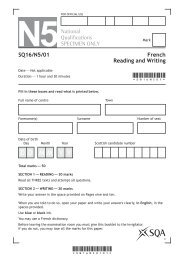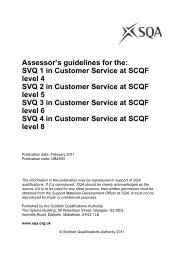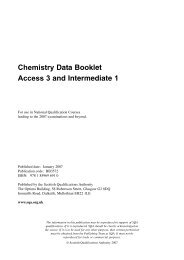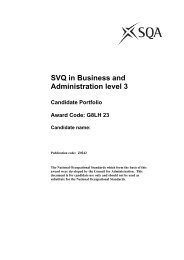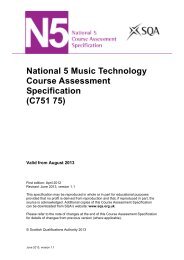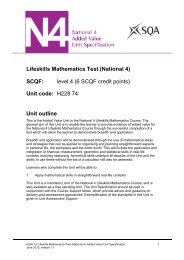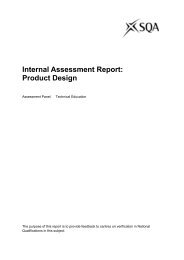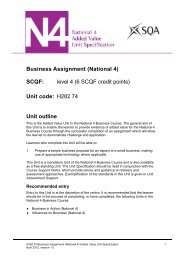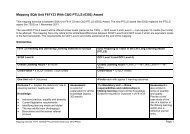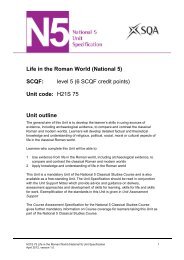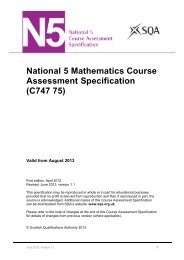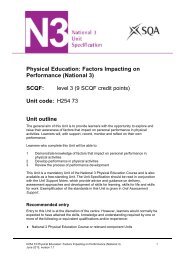National 3 History Course Support Notes - Scottish Qualifications ...
National 3 History Course Support Notes - Scottish Qualifications ...
National 3 History Course Support Notes - Scottish Qualifications ...
Create successful ePaper yourself
Turn your PDF publications into a flip-book with our unique Google optimized e-Paper software.
Example 1 – The Cross and the Crescent 1095-1125<br />
causes of the First Crusade<br />
motives of those who joined the Crusade<br />
experience of peasants on the Crusade<br />
military tactics used by Crusaders<br />
success in Jerusalem<br />
aftermath, life in the Latin States.<br />
There are a wide range of sources that can be used for this topic. Learners could<br />
examine the different motives Crusaders had for joining the First Crusade. They<br />
could then produce a poster advertising the First Crusade and highlight a<br />
particular motive allocated to, or one chosen by learners. For example, one such<br />
poster could encourage knights to join the Crusade in order to gain land and<br />
could include points such as inheritance and land shortage in Europe as factors.<br />
On a map, learners could chart the progress of the Crusaders from across<br />
Europe to the Holy Land.<br />
Through the study of the religious, military and economic factors that influenced<br />
developments during this period, learners will develop their knowledge and<br />
understanding which will meet the Outcomes and Assessment Standards of the<br />
Unit.<br />
Example 2 – Hitler and Nazi Germany 1923-1939<br />
the events of the Munich Putsch 1923<br />
Nazi rise to power in January 1933<br />
tactics used by Hitler to make himself supreme ruler of Germany 1933-1934<br />
Hitler’s control over the German people<br />
the persecution of the Jews<br />
opposition to Nazi rule<br />
Learners could work in groups to learn about the persecution of the Jews. Using<br />
a number of ‘fact’ cards either created by the group or with information already<br />
printed on them, learners could be involved in a co-operative learning exercise to<br />
determine the chronological order of the persecution of the Jews. For example,<br />
each group would design their own time line and stick the cards to the timeline at<br />
the point they occurred. Learners could then draw a conclusion on when and how<br />
the persecution of the Jews increased between1933-1939.<br />
Through the study of the social, political and economic factors that influenced<br />
developments during this period learners will develop their knowledge and<br />
understanding which will meet the Outcomes and Assessment Standards of the<br />
Unit.<br />
Through these approaches learners will have opportunities to generate evidence<br />
which can be gathered and retained by teachers and lecturers to demonstrate<br />
achievement of both Outcomes of this Unit, either wholly or in part.<br />
Unit <strong>Support</strong> <strong>Notes</strong> for Historical Study: European and World (<strong>National</strong> 3) Unit 44



